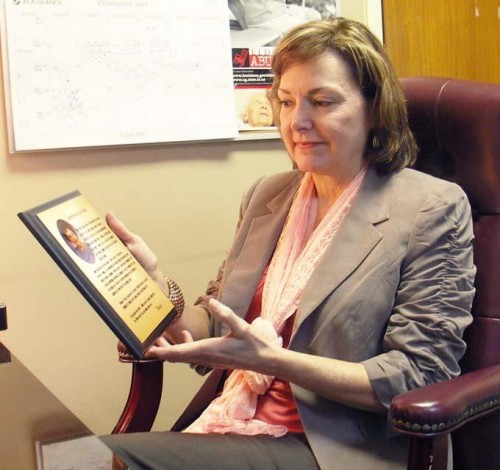March 15-April 15: 13th annual Jubilee Festival of the Arts (Thibodaux)
March 1, 2011
Elder abuse … old enough to know better
March 3, 2011The Mardi Gras carnival season kicked off Friday and retailers, hotel and restaurant owners hope it brings an economic boost to the region – especially 10 months after the BP Deepwater Horizon explosion and oil leak followed by an offshore drilling moratorium and reduced tourism that caused the area to take a hit in securing revenue.
Hessie Cox, reservations revenue manager at the Quality Hotel, said that bookings between Friday and reservations through Fat Tuesday have doubled this year from the two previous seasons. “We have seen a major increase over the last couple of years,” she said. “Before the hurricanes [of 2005 and 2008] it was real good, but after the hurricanes it kind of declined.”
Cox said that most of the bookings are from Louisiana residents that live in other parts of the state with a minimal number of out of state guests.
At the Plantation Inn, administrator Melanie Burton said numbers are disappointing for the carnival season. “We haven’t seen a huge increase in reservations over the past two or three years at least,” she said.
Like Cox and other innkeepers, Burton attributed the aftermath of major storms during a short period of time as hurting the draw of travelers to the region. She also noted increased competition as a factor.
“Ever since Katrina, there has been a boom of hotels in this area, and now there is not enough business to go around for everyone,” she said. “The oil spill didn’t help when it cut out a lot of the oilfield business. We have lots of availability during this Mardi Gras season.”
Restaurant owners and managers that were approached declined to offer their opinions or experiences when it came to business during the Mardi Gras period.
Agencies such as the Houma-Terrebonne Chamber of Commerce and the Houma Area Convention and Visitors Bureau were not able to offer hard numbers regarding business activity for the season.
“It’s a free, open to the public event, so it is hard to track attendance,” visitors bureau communications manager Kelly Gustafson said. “It has an overall great affect on the economy.”
In fact, it might be Mardi Gras that sustains the region between Epiphany and Lent.
According to figures provided by the Terrebonne Parish Sales and Use Tax Department, sales tax revenue for the month surrounding Fat Tuesday – regardless if it is in February or March – remain consistent with months of collection on either side of that time period.
Yet, between 2000 and 2009 there was a steady increase in sales tax receipts for Terrebonne Parish that went from approximately $5 million to $9 million. Sales tax receipts plunged during Mardi Gras 2010 to $6.8 million for a 30-day period. That was two months before the BP oil spill.
Mardi Gras 2006, following Hurricane Katrina in August 2005, had a seasonal sales tax return for Terrebonne Parish of $7.7 million. In 2008, after the hit from Hurricane Gustav in September 2007, sales tax revenue corresponding with the Mardi Gras season totaled $8.9 Million.
There is a saying in Louisiana: “Ain’t no hurricane gonna’ stop Mardi Gras.” For the Tri-parish region, Mardi Gras season may be what has kept business going during what could otherwise be a slow winter.
The sale of Mardi Gras paraphernalia appeared strong to Steve Morgan this year at Mardi Gras Bead Factory in Houma. “[Business has been] very good. It is a good help [to the economy],” Morgan said. This seasonal shop owner said he was not sure how much money he had made, but said he was making a profit.
According to fastcompany.com Mardi Gras in New Orleans attracted 1.2 million tourists during 2010. Hotels took in approximately $56 million, and prices for a double room on Bourbon Street increased 151 percent over any other time of the year.
Houma is listed in Louisiana tourism material as having the second largest Mardi Gras celebration anywhere after New Orleans.
Krewes that put on parades and parties are said to spend the greatest amount of money on beads, toys, doubloons and other items for throws. Participants and observers also tend to stock up on food to grill along parade routes as well as soft drinks and alcohol to consume during festivities.
Some local observers noted that when Mardi Gras festivities are taking place, that is the focus of entertainment for residents rather than restaurants and movies. Others contend the period of celebration is a boost and a key draw for visitors to the region.
For those needing a break from months of economic uncertainty, Mardi Gras Carnival season is a welcomed time to have fun while seriously looking for someone to throw added revenue their direction.








